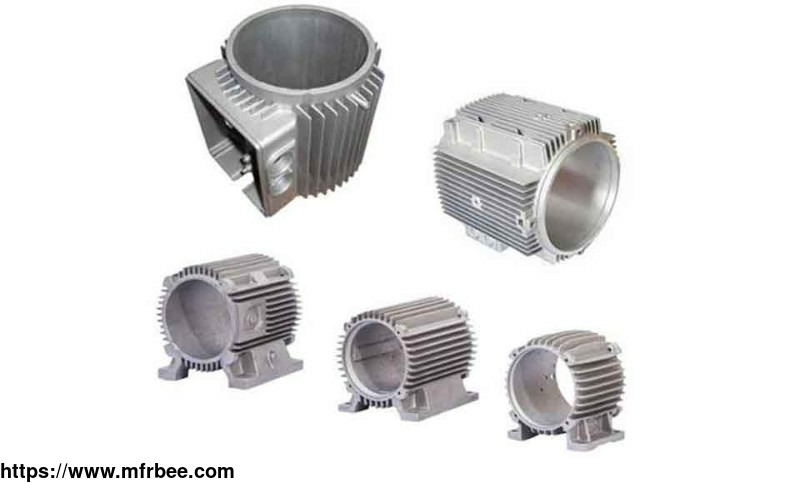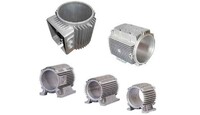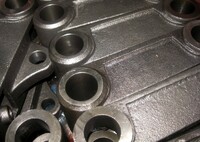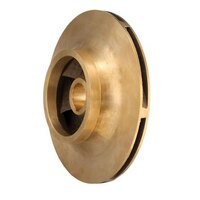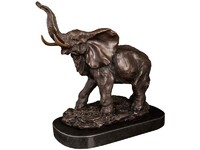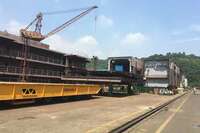Die casting
Product Quick Detail
- FOB Price
- USD $850.00 / Piece
- Minimum Order
- 3000
- Place Of Origin
- China
- Packaging
- N/A
- Delivery
- 50 days
Specifications
High precision die casting involves 3 key elements: the die casting machine, the mold, and the alloy materials, and the die casting could be described as the process of combining pressure, speed,
and time to achieve an ideal cast metal part. The pressure applied during the casting process is a different feature from other casting methods. Typically the melted metal was filled into the mold
with high pressure and speed, and solidification under pressure as well to form the casted part. Usually, the pressure applied during the casting process is over dozens of Mpa, with the meatal
pouring speed of 16~80 m/s, the liquid metal only takes 0.01~0.02 seconds to fully fill the die cavity.
Types of Gravity Die Casting
Low Pressure Die Casting
Low-pressure casting is a method to form castings by filling the cavity with liquid metal under pressure. Casting formability is good, conducive to the formation of clear contours, and clean
surface castings. Large thin-walled castings are more favorable to the formation. The organization of products made by die casting is precise and has high mechanical properties.
Vacuum Die Casting
Rayforce vacuum die casting is an advanced die casting process that eliminates or significantly reduces porosity and dissolved gases in die castings by removing the gas in the die cavity during the
die casting process, thereby improving the mechanical properties and surface quality of die castings.
Squeeze Die Casting
In Rayforce squeeze die casting process, the metal liquid is poured directly into the cavity without the pouring system, so there is less air absorption and the casting can be heat treated. There
is no pouring system, the metal liquid fills the cavity under pressure, crystallization and solidification, good shrinkage effect, fine grains, dense and uniform organization.
Semi-Solid Die Casting
In Rayforce semi-solid die casting process, strong stirring is carried out during the solidification of liquid metal, so that the dendritic network skeleton, which is easily formed by ordinary
casting, is broken up to form a scattered granular tissue form, thus making a semi-solid metal liquid, which is then die-cast into billets or castings.
What Are the Types of Die Casting?
Die casting is a casting method in which a liquid or semi-solid metal or alloy, or liquid metal or alloy containing an enhanced phase, which is filled into the cavity of a die casting mold at a
high rate under high pressure, and the metal or alloy is solidified under pressure to form a casting. The pressure commonly used in die casting is 4~500MPa, and the die cast metal filling speed is
0.5-120m/s. Therefore, high pressure and high speed is the fundamental difference between die casting method and other casting methods and is also an important feature.
The principle of die casting is mainly the principle of pressure injection molding of the metal fluid. The die casting conditions are usually set by adjusting the speed and pressure on the die
casting machine, as well as the switching position of the speed, and the rest is selected in the die casting mold line.
Characteristics Of The Die Casting Process
Die casting is a casting method in which molten alloy liquid is poured into a press chamber, filling the die casting mold cavity of a steel mold at high speed and causing the alloy liquid to
solidify under pressure to form a die casting mold.
The main feature of die casting that distinguishes it from other casting methods is high pressure and high speed.
The die cast metal fluid is filled into the die casting mold cavity under pressure and crystallized and solidified under higher pressure, commonly 15-100MPa.
The die cast metal liquid fills the die casting mold cavity with high speed, usually at 10-50m/s. Some can also exceed 80m/s, (the linear speed of the cavity through the internal gate-internal gate
speed), so the filling time of the die cast metal liquid is very short, about 0.01-0.2 seconds (depending on the size of the casting and difference) within. The die casting mold cavity can be
filled within 0.01-0.2 seconds (depending on the size of the casting).
What Are The Advantages To Using Die Casting?
The die casting process has several obvious advantages such as high production efficiency, low operation skills requiring, high accuracy, and tolerance class for the finished product. As a result,
a portion of raw material is saved and further machining process is not required either. Also, the die casting is able to produce detailed parts, which is a perfect option for the big amount of
pieces production. So generally speaking, the die casting is considered to be efficient, economic, a broad range of shape capable, long life, versatile applied casting process. Especially for the
aluminum and alloy die cast metal parts, it has been widely applied.
Why Die Casting Is Used
Due to the advantages of die casting, it is widely used, mainly in the mass production of non-ferrous alloy castings.
In the die casting production, accounting for the largest proportion is aluminum alloy die casting, which is 30% to 50%; followed by zinc alloy die casting; copper alloy die casting accounted for
1% to 2%. Application of die casting most is the automobile, tractor manufacturing, followed by instrument manufacturing and electronic instrument industry, and then agricultural machinery, defense
industry, computer, medical equipment, and other manufacturing industries.
The parts produced by die casting mold are engine cylinder block, cylinder head, transmission case, engine cover, instrumentation and camera shell and bracket, pipe fittings, gears, etc.
In recent years, high technology has been applied to the field of the die casting mold. Such as the use of a three-stage injection mechanism to control the pressure, injection speed, and gas in the
mold. The development of special die casting processes (such as vacuum die casting, directional pressure casting, oxygen die casting, etc.) and the application of computer control technology,
effectively remove the pores, improve the density of the casting, while developing new die casting mold materials and heat treatment of new technology to extend the service life, so that the
ferrous die casting metal has made some progress.
If you want to buy die casting, please contact us.
As a castings company, we will provide more types of related products for sale, anything you need, please leave us a message.
- Country: China (Mainland)
- Business Type:
- Market:
- Founded Year:
- Address:No.1-101, building no.18, gate no.189, Nanneihuan street, Yinze district, Taiyuan city, Shanxi province, China
- Contact:rayforce com
